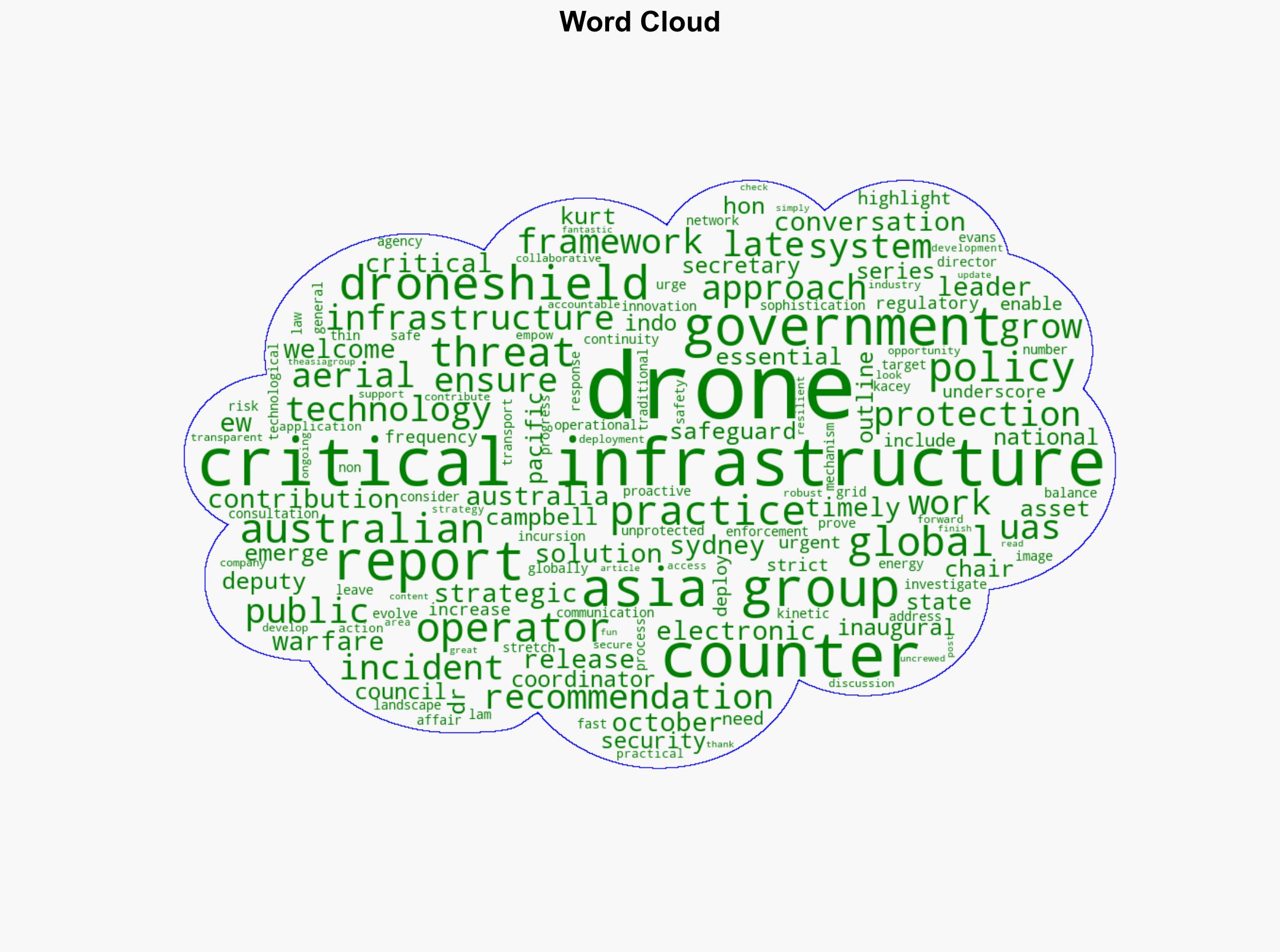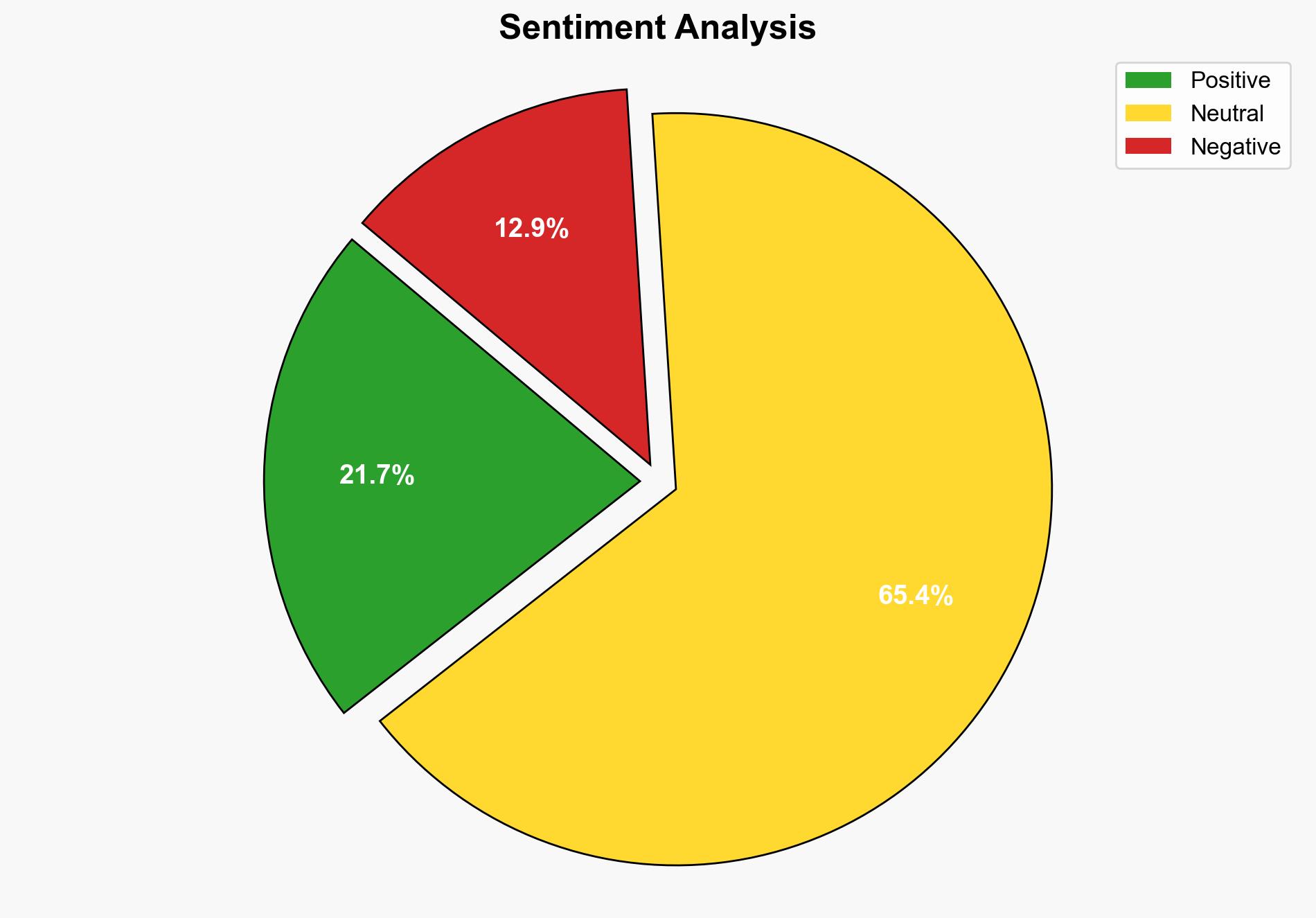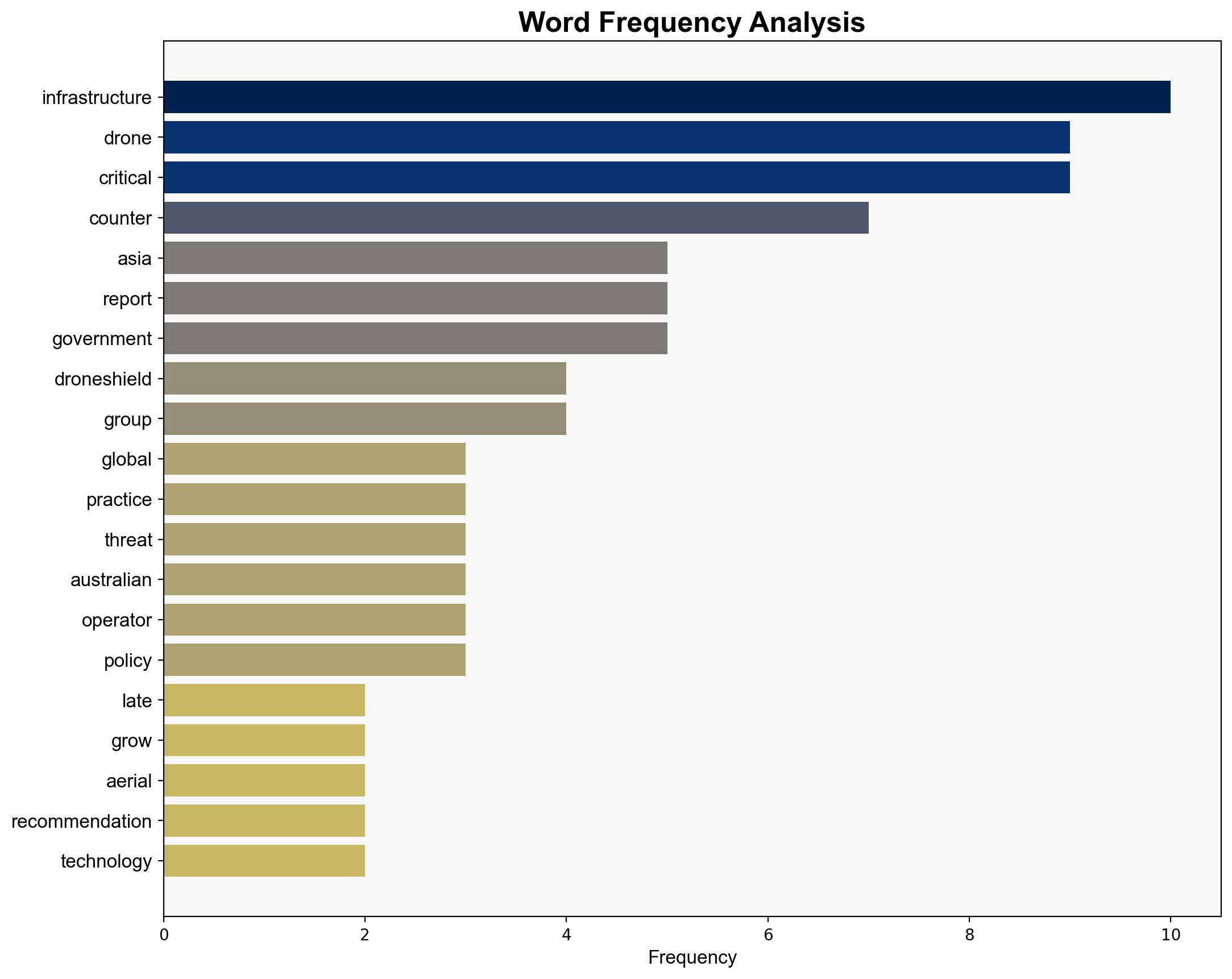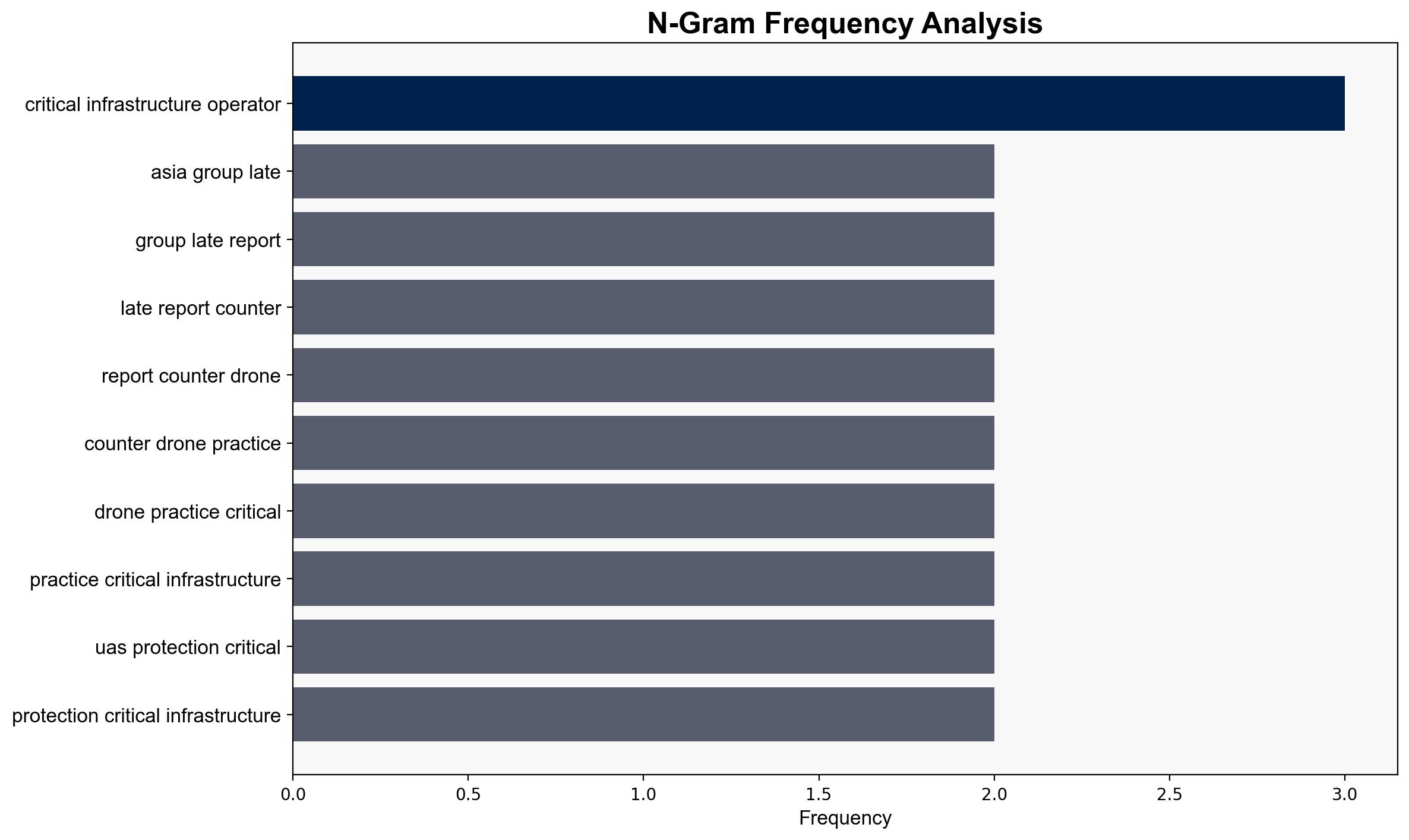DroneShield Welcomes The Asia Groups Report on Counter-Drone Best Practice for Critical Infrastructure – Soldiersystems.net
Published on: 2025-10-23
Intelligence Report: DroneShield Welcomes The Asia Groups Report on Counter-Drone Best Practice for Critical Infrastructure – Soldiersystems.net
1. BLUF (Bottom Line Up Front)
The most supported hypothesis is that the Asia Group’s report is a strategic move to influence policy development in counter-drone technology deployment, with a moderate confidence level. It is recommended that stakeholders engage in collaborative policy discussions to ensure a balanced approach to counter-drone technology implementation, addressing both security and regulatory concerns.
2. Competing Hypotheses
1. **Hypothesis A**: The Asia Group’s report is primarily a strategic initiative to influence global and national policy on counter-drone technology, aiming to establish a regulatory framework that benefits both government and industry stakeholders.
2. **Hypothesis B**: The report is a reactive measure to the increasing frequency and sophistication of drone incursions, primarily serving as a call to action for immediate policy changes and technological deployment without a long-term strategic framework.
Using ACH 2.0, Hypothesis A is better supported due to the structured and collaborative approach emphasized in the report, indicating a long-term strategic intent rather than a purely reactive stance.
3. Key Assumptions and Red Flags
– **Assumptions**:
– The Asia Group’s recommendations are based on comprehensive data and analysis of current drone threats.
– Governments and industry stakeholders are willing to collaborate on policy development.
– **Red Flags**:
– Lack of specific data on the effectiveness of proposed counter-drone technologies.
– Potential bias in the report favoring industry interests over public safety concerns.
4. Implications and Strategic Risks
The report’s emphasis on proactive policy could lead to accelerated deployment of counter-drone technologies, impacting privacy and civil liberties. There is a risk of regulatory frameworks lagging behind technological advancements, potentially leading to misuse or overreach. Geopolitically, increased focus on counter-drone measures may escalate tensions in regions with high drone activity.
5. Recommendations and Outlook
- Engage in multi-stakeholder dialogues to develop balanced regulatory frameworks that address both security and privacy concerns.
- Conduct pilot programs to assess the effectiveness and impact of proposed counter-drone technologies.
- Scenario Projections:
- Best: Successful implementation of balanced policies leads to enhanced security and innovation.
- Worst: Overregulation stifles technological advancement and infringes on civil liberties.
- Most Likely: Gradual policy development with ongoing adjustments based on stakeholder feedback.
6. Key Individuals and Entities
– Kurt Campbell
– Kacey Lam Evans
– DroneShield
– The Asia Group
7. Thematic Tags
national security threats, cybersecurity, counter-terrorism, regional focus





